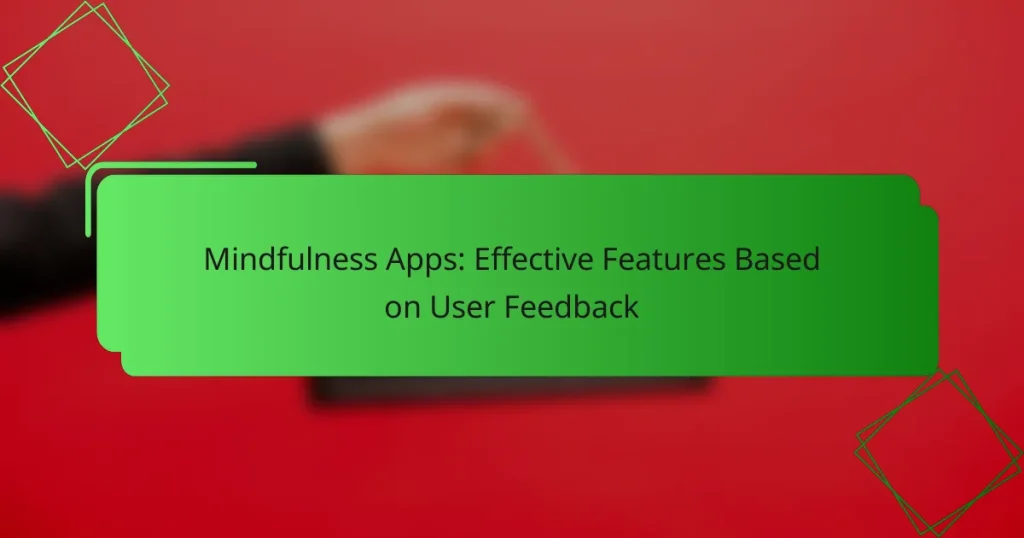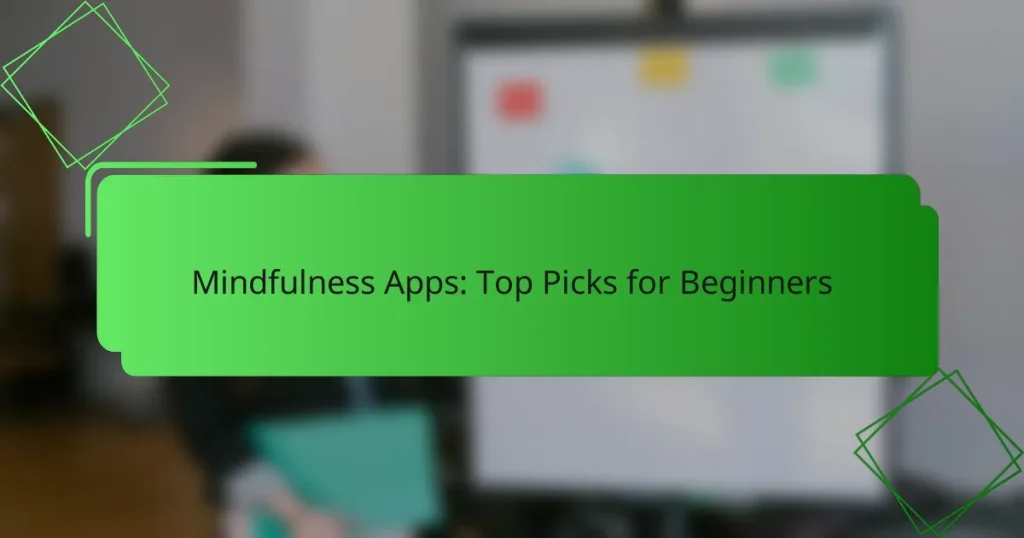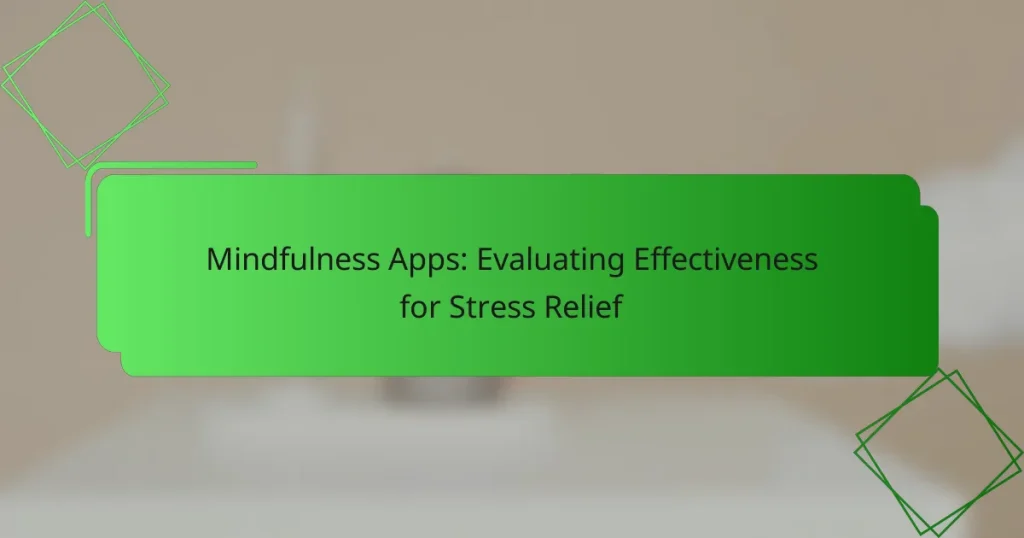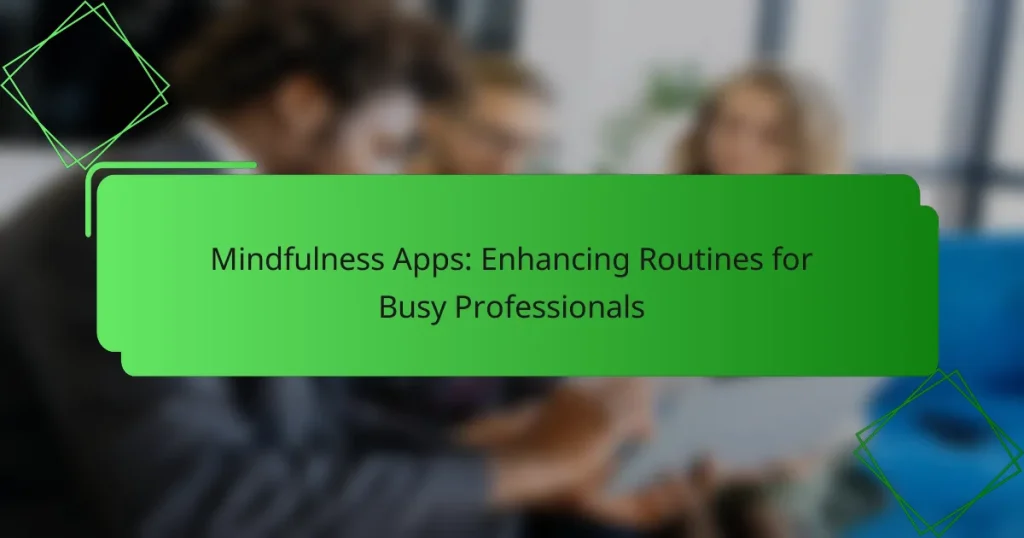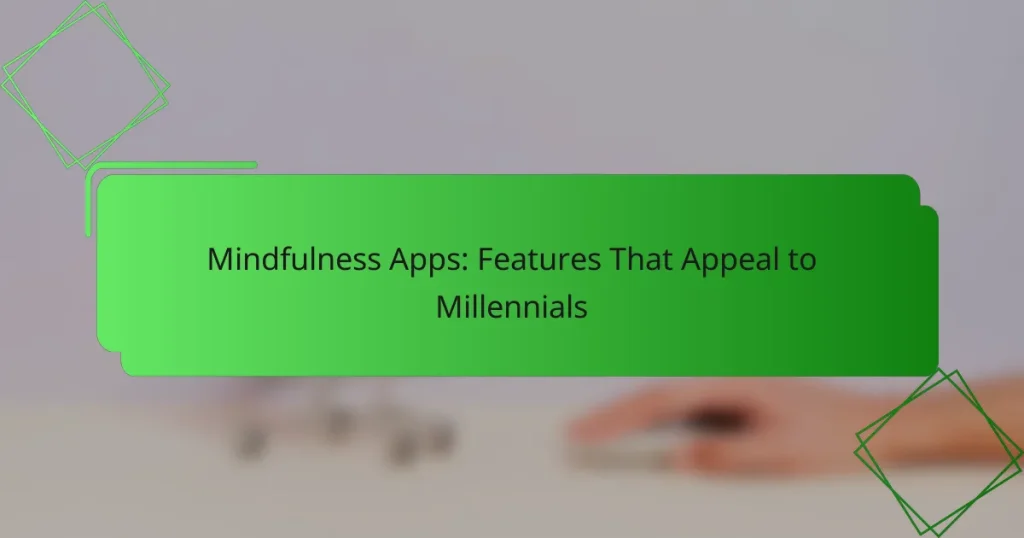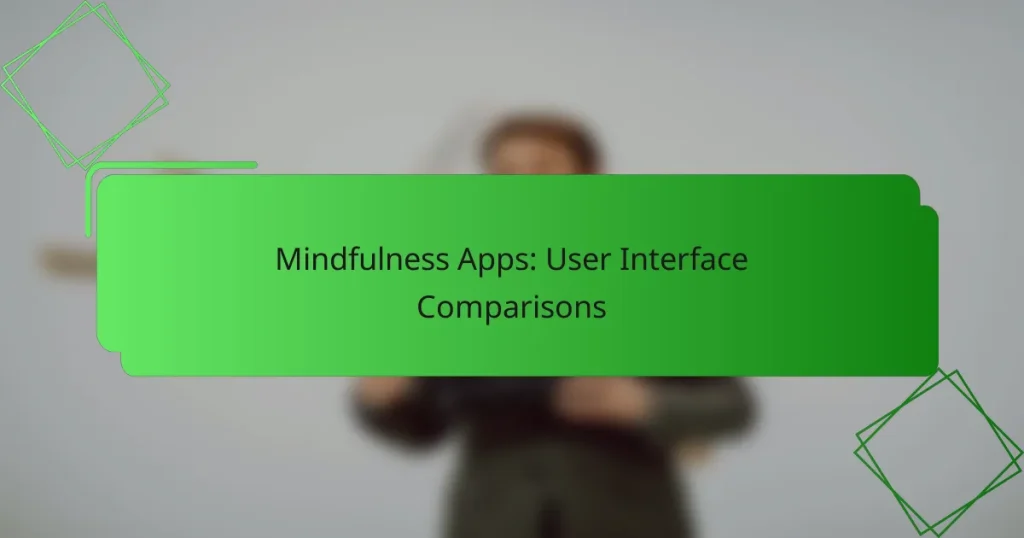In today’s fast-paced digital world, mindfulness apps play a crucial role in promoting mental wellness. These tools offer guided meditations, relaxation techniques, and mindfulness exercises to help users manage stress and enhance their overall well-being. By selecting the right app, individuals can personalize their meditation experience and support their journey towards greater mental clarity and emotional resilience.
Mindfulness Apps: Top Picks for Beginners
Mindfulness Apps: Evaluating Effectiveness for Stress Relief
Mindfulness Apps: Enhancing Routines for Busy Professionals
Mindfulness Apps: Features That Appeal to Millennials
Mindfulness Apps: The Role of Personalization in Success
Mindfulness Apps: User Interface Comparisons
What are the best mindfulness apps for digital wellness?
The best mindfulness apps for digital wellness include Headspace, Calm, Insight Timer, Simple Habit, and 10% Happier. These apps offer various features designed to enhance mental well-being through guided meditations, relaxation techniques, and mindfulness exercises.
Headspace
Headspace is a popular mindfulness app that provides a user-friendly interface and a wide range of guided meditations. It focuses on helping users develop a consistent meditation practice with sessions that vary in length, making it suitable for both beginners and experienced meditators.
Key features include themed courses on topics like stress, sleep, and focus, along with animations that explain mindfulness concepts. Users can choose from short sessions of just a few minutes to longer practices, allowing flexibility based on their schedules.
Calm
Calm is another leading mindfulness app that emphasizes relaxation and sleep. It offers a variety of features, including guided meditations, sleep stories, and soothing music tracks designed to help users unwind and improve their sleep quality.
With a diverse library of content, users can explore different meditation lengths and themes. Calm also includes daily mindfulness reminders and a progress tracker to encourage regular practice, making it a great tool for those looking to enhance their overall well-being.
Insight Timer
Insight Timer stands out for its extensive library of free guided meditations and music tracks from various teachers around the world. This app is ideal for users who prefer a community-driven approach to mindfulness, as it allows interaction with other users and teachers.
With thousands of meditations available, users can filter by duration, theme, or teacher, making it easy to find content that suits their needs. The app also features a timer for self-guided meditation, which can help users establish a personal practice.
Simple Habit
Simple Habit is designed for busy individuals who want quick mindfulness sessions that fit into their hectic lives. The app offers five-minute meditations that target specific situations, such as stress relief or focus enhancement.
Users can select meditations based on their current mood or situation, making it easy to find relevant content. The app also includes a variety of teachers and styles, ensuring that users can discover what resonates best with them.
10% Happier
10% Happier is geared towards skeptics of meditation, offering a practical approach to mindfulness. The app features courses and guided meditations led by well-known teachers, focusing on how mindfulness can be integrated into everyday life.
With a mix of video content, podcasts, and meditation sessions, users can learn about mindfulness in a relatable way. The app encourages users to take small steps towards incorporating mindfulness into their routines, making it accessible for those new to the practice.
How do mindfulness apps improve mental health?
Mindfulness apps enhance mental health by providing users with tools and techniques to practice mindfulness regularly. These applications often include guided meditations, breathing exercises, and progress tracking, which can help users manage stress and improve overall well-being.
Reduce anxiety
Mindfulness apps can significantly reduce anxiety by teaching users to focus on the present moment rather than worrying about the future. Techniques such as deep breathing and body scans help lower physiological symptoms of anxiety, promoting relaxation.
Many apps offer specific programs targeting anxiety, often lasting from a few minutes to half an hour. Regular use can lead to a noticeable decrease in anxious thoughts and feelings over time.
Enhance focus
By incorporating mindfulness practices, these apps help users enhance their focus and concentration. Mindfulness exercises train the brain to maintain attention on a single task, reducing distractions from external stimuli.
Short sessions, typically ranging from 5 to 15 minutes, can be integrated into daily routines, making it easier to improve focus during work or study periods. Users often report increased productivity and better task completion rates.
Promote emotional resilience
Mindfulness apps foster emotional resilience by encouraging users to acknowledge and accept their feelings without judgment. This practice helps individuals develop a healthier relationship with their emotions, making it easier to cope with life’s challenges.
Many apps include features that guide users through reflective journaling or gratitude exercises, which can strengthen emotional well-being. Over time, users may find themselves better equipped to handle stress and recover from setbacks.
What features should I look for in mindfulness apps?
When selecting mindfulness apps, prioritize features that enhance your meditation experience and support your personal growth. Key aspects to consider include guided meditations, progress tracking, and customization options, as these can significantly impact your engagement and effectiveness.
Guided meditations
Guided meditations are essential for users who are new to mindfulness practices or prefer structured sessions. These features often include audio or video instructions led by experienced instructors, helping users focus and relax. Look for apps that offer a variety of meditation lengths, ranging from just a few minutes to over an hour, to accommodate different schedules.
Additionally, consider the diversity of meditation themes, such as stress relief, sleep enhancement, or emotional healing. A broader selection allows you to address specific needs and keeps your practice fresh and engaging.
Progress tracking
Progress tracking features help you monitor your meditation habits and improvements over time. Many apps provide visual representations of your practice frequency, duration, and milestones achieved, which can motivate you to maintain consistency. Look for apps that offer daily reminders or streaks to encourage regular use.
Some apps also allow you to set personal goals, such as meditating a certain number of times per week. This can help create a sense of accountability and make your mindfulness journey more rewarding.
Customization options
Customization options enable you to tailor your mindfulness experience to fit your preferences and lifestyle. Look for apps that allow you to choose background sounds, meditation lengths, and instructor voices. This flexibility can enhance your comfort and enjoyment during sessions.
Additionally, consider apps that offer personalized meditation recommendations based on your mood or goals. This feature can help you discover new practices that resonate with you and keep your mindfulness journey dynamic and effective.
How much do mindfulness apps cost?
Mindfulness apps typically range from free to subscription-based pricing, with many offering various tiers to suit different budgets. Users can find options that fit their needs, whether they prefer free access or are willing to pay for premium features.
Free versions available
Many mindfulness apps offer free versions that include basic features such as guided meditations, breathing exercises, and progress tracking. These free options can be a great starting point for users who are new to mindfulness and want to explore its benefits without any financial commitment.
However, free versions may have limitations, such as fewer meditation sessions or restricted access to advanced features. Users should evaluate whether these constraints meet their needs before committing to a particular app.
Subscription models
Subscription models for mindfulness apps usually charge a monthly or annual fee, providing access to a wider range of content and features. Prices can vary significantly, often falling between $5 to $15 per month, depending on the app and its offerings.
Many apps also offer free trials, allowing users to test premium features before committing to a subscription. It’s wise to compare different apps to find the best value based on the features that matter most to you.
One-time purchases
Some mindfulness apps are available for a one-time purchase, typically ranging from $10 to $30. This option can be appealing for users who prefer not to deal with recurring fees and want to own the app outright.
One-time purchases often provide access to a set library of content, but users may miss out on regular updates or new features that subscription models offer. Consider your long-term needs and whether a one-time purchase aligns with your mindfulness journey.
What are the most popular mindfulness app trends in 2023?
In 2023, mindfulness apps are increasingly focusing on AI-driven personalization and integration with wearables. These trends enhance user experience by tailoring content to individual needs and leveraging real-time health data.
AI-driven personalization
AI-driven personalization in mindfulness apps allows for customized meditation and wellness plans based on user behavior and preferences. By analyzing data such as session length, frequency, and user feedback, these apps can suggest tailored content that resonates more with individual users.
For example, if a user frequently engages with stress-relief meditations, the app may prioritize similar sessions or recommend new techniques that align with their interests. This level of personalization can significantly improve user engagement and effectiveness of the mindfulness practice.
Integration with wearables
Integration with wearables is another significant trend, enabling mindfulness apps to access real-time health metrics like heart rate and sleep patterns. This data can inform users about their mental state and suggest appropriate mindfulness exercises based on physiological responses.
For instance, if a wearable device detects elevated heart rates, the app might prompt the user to engage in a calming meditation or breathing exercise. This synergy not only enhances the mindfulness experience but also promotes a more holistic approach to mental wellness.
